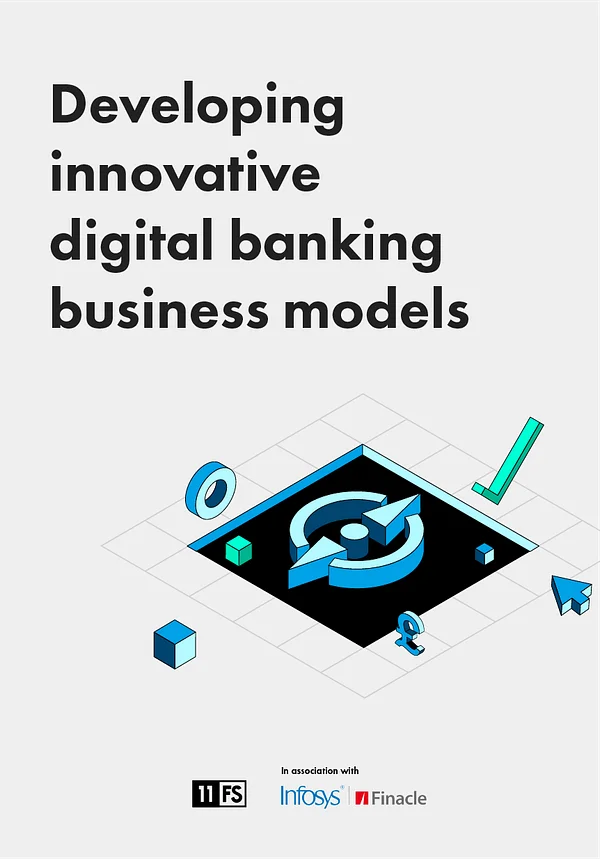Creating a successful new venture is not easy. There are many pitfalls and risks involved from funding to technology. The biggest challenge though is designing something customers love.
Using Jobs to be Done (JTBD) can help minimise the risks in achieving this. Based on my experience as part of a founding team at a startup, working with retailers, fintechs and incumbent banks, this is a thorough account on the benefits of using Jobs to be Done to build successful businesses and find a path to growth.
Customers don't want your product
"But I have millions of customers using my product" someone once retorted. It was a fun answer and sparked a lot conversation about the purpose of JTBD. What motivates customers to move from one product to another? Why do customers start using one product over another? What makes customers loyal to a product and who are your real competitors?
Customers are a fickle bunch when it comes to using products and services, in truth customers only ever "hire" a product. Customers are focused on making progress on important jobs they have to get done in life. The naming of JTBD is very literal.
When analysing customer behaviour with JTBD, the focus is always on the progress customers are trying to make rather than the product and its features. When something new comes along, which does a better job, it's hard for customers to ignore it.
So what examples of are there of new propositions entering the market based around customer jobs?
1) Customers don't want a bank
The job: customers want to be more mindful of how their money is being spent.
Customers have started hiring services like Yolt to help them view their spending across all their accounts and get breakdowns and insights on how their money is being spent. Historically, customers have used bank statements, notepads and spreadsheets to make progress on this job. Now there is a free and easy to use mobile app that connects to all of a customer’s bank accounts.
Services like Yolt are interesting because they haven't built a bank. There is no bank account or product as we would typically define it in the financial services world. Yolt has created a financial control panel for the customer that adds a services layer to solve a customer job. This services layer disintermediates the bank rather than completely replacing it.
From the customers’ perspective, Yolt help the customer get the job done, be it paying bills, creating budgets or saving for the future. The incumbent banks are still working in the background but run the risk of being forgotten completely because the experience of “banking” is being managed by someone else completely.
2) Customers don't want a GP surgery
The job: customers want quick access to medical advice regardless of where they are.
Babylon is helping over 2 million customers in Rwanda access free state provided healthcare directly via their mobile app. Patients can chat and book appointments with doctors, order prescriptions and access their medical records. Babylon is offering similar services in London, the US and are looking to partner with Tencent in China.
Babylon is a fascinating example of how to scale human expertise using networked mobile technology. There are lots of human focused industries that haven't digitalised their proposition because humans are hard to scale. Healthcare, education and financial advisory are all businesses facing this challenge.
The introduction of Babylon hasn't removed the need for a GP surgery, it compliments it. A digital service like Babylon removes the geographical barriers for the customer making progress towards their desired state and at the same time minimising the strain on local surgeries.
3) Customers don't want an energy provider
The job: customers want to help improve the environment.
Bulb offers 100% renewable green energy and supports independent generators to help nurture the ecosystem of renewable energy sources. In one of the most commoditised industries there is, Bulb have found a job they can help customers make progress on, even though it is completely intangible and based on beliefs and values.
This is a super interesting example because Bulb are driving a direct switch when there is no difference in the outcome of the core product; providing energy to the home. Either your lights turn on or they don't. Instead Bulb tap into secondary customer jobs to drive the customer to switch.
They tap into the customer's beliefs and values which are highly emotional. They also provide a digital first experience (including a mobile app) and are among the cheaper providers in the market. Although based on my searches they are never the cheapest, placing a value on the differentiation they offer.
The thing that all three brands have in common is their approach to designing propositions. They differentiate by delivering services and experiences around the Jobs to be Done that customers care about. I have also purposefully chosen examples of brands operating in regulated markets where commoditisation, and/or the lack of competition, has historically been very high.
Typically the levers in these markets are heavy price competition and heavy investment in building brand awareness to work the funnel. What these digital challengers show is that the focus on customer Jobs to be Done helps design successful propositions in difficult market conditions.

A Jobs to be Done mindset
One of the questions I get asked most is "who uses Jobs to be Done?". There are a couple of difficulties with answering this question.
Firstly, Jobs to be Done (JTBD) is not something you pick up and use. It is not a Lego set where if you follow the instructions eventually you'll have built the Death Star. JTBD is a mindset. It is a theory and way of looking at the world. My life, your life and customers' lives are messy, full of inconsistencies, ambiguities and irrationalities.
Furthermore, each business brings a different set of perspectives to a problem. They leverage their “unfair advantage” (a set of competencies or capabilities that set it apart from its competitors) to attack the problem. Jobs to be Done is a way of thinking about the problem, but there is rarely an off the shelf methodology to begin applying JTBD. You have to commit to the core principles and flex around the nuances of the customer, market and the team.
Secondly, because JTBD is a theory, businesses can be using it without knowing what JTBD is, something that is easy to spot as an outsider looking in.
I have no idea if Bulb, Babylon or Yolt use JTBD but the way they've designed their propositions suggests they certainly think in this way. The theory of JTBD is not just used to design new propositions it’s also a way describing how businesses design propositions.
Propositions designed with a JTBD mindset typically create end-to-end customer experiences. A customer job is not an activity like "checking my balance" on my credit card. It is a desired state that involves a number of different tasks and interactions to reach.
For example, to be in control of your spending will involve being aware of your balance but the solution might not be that the customer actively checks their balance. A message might be sent to the customer showing their remaining balance after every transaction. Furthermore, a customer might have multiple accounts therefore aggregating account balances is a critical step to making progress on this job to be done.
The rise of the API economy and the introduction of open banking across Europe means that connecting information across multiple products is not only possible but essential to delivering end-to-end, service based, experiences for customers.
Over the years, as the financial services industry has digitised, the "services" bit shrank to a point where all that was left were very rigid commodity products that served a function far removed from the jobs customers were hiring them for. The most successful fintechs are using a JTBD mindset to close this services gap and deliver new and meaningful value to the customer.
Applying JTBD thinking to research, product design and marketing ensures you develop and focus on delivering services around end-to-end customer journeys. The challenge then becomes discovering these customer jobs and identifying those market segments that are most underserved and overcharged.
Customer research and faster horses
When businesses or new ventures are designing a new proposition it is tempting to ask customers what they want. Don't do it. Customers have no idea what they want. I'm not going to use Henry Ford's faster horses quote, I'm sure you're thoroughly sick of it. But you know the one I mean and the point I'm driving at.

Applying Jobs to be Done to research is a way of speaking to customers without asking them what they want. It is hard to design a new breakthrough proposition when the research is focused on the existing product or worse the type of technology customers would like to see in their products.
I saw a survey question recently which asked, "which of the following types of technology would you be interested in using?". Answers; chatbots, AI decision support, voice commands and VR experience.
This is the kind of questioning that gives research a bad reputation because it tells a business nothing about what the customer actually wants.
Technology used to be exciting. With research like this it’s now something that is "marketed” to customers with less thought on its application to solve real customer problems.
Customer research is one of the most important things you can do when designing a new proposition, but only if you ask the right questions. As Sam Altman says in his Startup Playbook:
"We tell founders they should be building product and talking to users, and not much else besides eating, sleeping, exercising, and spending time with their loved ones."
The most successful startups think in exactly the same way. When I first started working with Jason Bates he recounted his experience of doing customer research at Monzo:
“When we first started Monzo we spent a lot of time with customers asking them, ‘What’s wrong with your bank?’. And most people just said ‘Nothing, it’s fine’.”
Jason, and the team at Monzo, quickly learnt the right questions to ask and the challenger bank developed into the success it is today. Those that have experienced the power of asking customers the right questions never look back. In fact, they design feedback loops into as many areas of the business as possible because they know that any chance of speaking to the customer is an opportunity to improve and explore new avenues for growth.
The businesses we build at 11:FS begin with first principles; the customer and defining the problem. The customer research we do is both exploratory and focused.
Financial services is broad, so exploratory research identifies the higher level Jobs to be Done to ascertain the relationship between them.
When redefining an industry, like financial services, the opportunity exists in the intersection between customer jobs. For example, in many cases, customers hire savings accounts and credit products for the same job e.g. booking family holiday. The customer is just trading off time (have it sooner on credit) and cost (have cheaper by saving up).
With a clearer understanding of the customer's priority Jobs to be Done (usually those spoken about with higher levels of emotion and pain), we zoom into the detail of those jobs.
Our approach adapts the great work produced by Moesta and his Switch model and Klement with his more detailed account of progress. They are ultimately driving at the same thing, the devil is in the detail of the application and terminology used within the context of the team.
Every business is different, every team has a unique perspective and set of experiences it brings to the table. As a result how you apply JTBD and the methods you adopt are highly situational. The more experience the team has of thinking in a JTBD way, the easier the team will adapt, the faster they'll learn and the quicker they'll execute.
Having extolled the virtues of speaking to customers there are many organisations that don't even bother with research. Instead they jump head first into design sprints in an attempt to follow the lean startup approach of build > measure > learn.

A solution to solutioneering
Without a shadow of a doubt every new startup or product team has to minimise the time it takes to get product into customers’ hands. The biggest reason new startups fail is because customers don't care which results in the business failing to find product market fit.
Lean methodologies offer a process to get to market fast. The build, measure, learn loop helps businesses iterate quickly and adapt the product to what the customer wants.
A problem well stated is a problem half solved
Charles Kettering
The lean approach has become hugely popular in big organisations renowned for moving slowly. The unfortunate thing is the best bit about the lean startup approach, rapid iteration through validated learning, is hard to implement in large organisations with old world operating models and legacy technology systems.
What happens instead is, to move quickly, many organisations move into design sprints without fully defining the problem. I've written about this before, where product or innovation teams jump straight into the solution space before exploring the problem space.
Solutioneering in this way runs the risk of getting stuck in an endless cycle of build, measure, learn without ever finding an efficient answer. A situation that can result in the solution becoming more complicated than the problem.
The key thing missing from the lean approach is, how do you know what to build in the first place?
The Lean Startup advocates speaking to customers, but only when validating a prototype or an MVP. Eric Ries, places great emphasis on validated learning, the insights unlocked by the customer using the product, but very little on building the right thing. In the book he says:
“Unlike a traditional strategic planning or market research process, this specification will be rooted in feedback on what is working today rather than in anticipation of what might work tomorrow.”
But there has to be a strategy. And with all strategies there is a thesis about how you will win. A key part of that thesis will be a set of assumptions about what customers want. Get these wrong and the new business could be finished before any learnings are validated in your first build, measure, learn loop.
There has to be a process that de-risks the strategy of the new business. Applying JTBD to this early phase puts the customer at the heart of the strategy and can significantly increase the chances of the customer caring about what you've built. New businesses or propositions that are built on purpose and with purpose have much greater chances of success.
At 11:FS we follow a slightly modified double diamond process. We find that the first diamond is largely skipped over by many organisations, but it is critical to fully understanding the customer's problem before the design process begins. As Charles Kettering famously said: "A problem well stated is a problem half solved."
Once you know you are designing the right thing you are perfectly set-up to go and build the thing right. That’s when the process of validated learning through build, measure, learn loops become highly valuable in optimising the product.
One of the misconceptions of doing customer research is that it is slow and expensive. With an agile mindset and a bit of heart and hustle this should not add significant cost or time, relative to the overall cost, time and risk associated with getting the business started.

Agile and JTBD
Agile has become a huge buzz word for many large organisations. Like Jobs to be Done, agile is based on a set of core principles (see the agile manifesto) designed to help teams work more efficiently and flexibly. Agile is something you do, rather than something you use.
The problem many big organisations face is that they are using agile within the confines of their own organisational structures. So it warps and becomes something different.
The biggest impact I see this having on how products are formed is the siloed nature of teams. Product teams outsource the customer research to centralised departmental Insight teams or research agencies that go away for two months and come back with a 50 slide PowerPoint deck.
This can significantly disadvantage the process because it assumes two things:
- Speaking to customers is a one-off piece of work
- The process of customer research is static. There’s a set of inputs that go into a black box somewhere and some magic is spat out the other end.
Research is as much an agile process as product development, a lot of the learning is in the doing rather than the just the output of research.
Digital banking is only 1% finished, that’s our core belief at 11:FS. While this is a statement of optimism for the opportunity to redefine an industry, it’s also a mindset shift.
We’ll also never be 2% finished, the possibilities of digital are ever evolving. In this new world, nothing is ever finished. The same can be said for research, speaking to customers is only 1% finished. It’s the same mindset, learning from your customers is an ongoing process, it’s never finished.
It’s easier to make things people want, than it is to make people want things
The research phase of Jobs to be Done is more concentrated at that start of the proposition design process. However, there should be constant re-evaluation of how the priority of the jobs change as the proposition and the market evolves. When you release something to the world that customers care about it creates a ripple. The dynamic of the market changes forever. When you solve one customer job new ones surface because you are helping your customers make progress.
A great example of this can be shown in a recent piece of research conducted by 11:FS. We looked at the JTBD of the personal finance management (PFM) market in the UK. We analysed two groups of customers; those that currently use PFM tools like Yolt or Money Dashboard and non-users of these services.
The most important and underserved jobs for non-users of PFM services were to better understand and manage their regular and recurring monthly bills. This is a key use case for some of the leading PFMs. For those customers already using PFM tools, the jobs they are now focused on have evolved.
Customers have made progress with better managing their money and so their priorities change. This group of customers are more focused on making "onward journeys" i.e. putting their money to use rather than just managing it. For example, they want to find ways to grow their money and wealth, build up a safety net to cover unexpected expenses and save towards future goals.
What we see from this analysis is that the jobs in themselves do not change but the priority customers place on these jobs shifts when new products enter the market. Therefore teams using JTBD, need an agile mindset. Small teams of highly skilled multi-disciplinary talent need the autonomy to react quickly to the changing priorities.
You can't just do the JTBD research, plan out a roadmap and execute a waterfall plan. It would be like the captain of a boat taking her eye off the compass and drifting way off course. Jobs to be Done is an agile way to design products customers love and ensure they continue to love them.
The cultural importance of JTBD
In the early days of designing a proposition there is usually a lot of uncertainty and it feels a bit uncomfortable... sometimes chaotic. This is a good thing because the team is diverging and exploring lots of things.
During this process JTBD can provide a common language for the team. A framework for analysing customer behaviours and forming archetypes of different customers. As ideas fly across the room Jobs to be Done can be the centre of gravity for the team. A reference point for checking assumptions and spotting risks.
There will be huge temptations to build certain things. Just because you can build a thing doesn't mean you should. Does it help the customer make progress? Is it creating operational efficiencies? Is it opening up new revenue streams? If not should you really be spending your precious time building it?
JTBD also links really well with other parts of the business like brand, design, operations, tech and business model design. Only applying JTBD to the product might not result in the desired impact. The business as a whole has to gravitate to these jobs. The distribution channels and partnerships need to align to the context in which customers discover, purchase and use the product.
The business model needs to be win-win for the business and the customer. Businesses needs to make money but equally the customer has to be treated fairly and get value for money.
When building these areas of the business, having customer jobs in mind helps create a business that has the customer at its core.
For example, developing the brand beliefs around customer jobs and the pain points will help your brand connect with its audience. This will result in a stronger connection between the experience of the product and the communication of the brand. Ultimately, it’s easier to make things people want, than it is to make people want things.
Kicking off with Jobs to be Done is important not only for the insight in to what customers want but also to build a culture that is fighting for the customer in all areas of the business.
Whether you're in tech, operations or the CEO of the business, listening to or conducting the interviews is hugely powerful in building this culture. A PowerPoint report is simply no replacement.
This has longer term effects too. With the founding team so in tune with the customer, new talent hired in, will be identified for an obsessive focus on the customer. New joiners will pick up the common language of customer and JTBD thinking.
As the business finds product market fit then revisiting the JTBD analysis will help shed light on how the priority jobs have evolved. It will show the impact your proposition has had on customers' lives and the path forward for opening up new growth opportunities and delivering more value to the customer.
Put simply, adopting Jobs to be Done thinking at the genesis of a new business will help create a culture built to succeed and grow.
Want to build a venture your customers will love using JTBD? Get in touch with us here to learn how.





.svg)
.svg)






